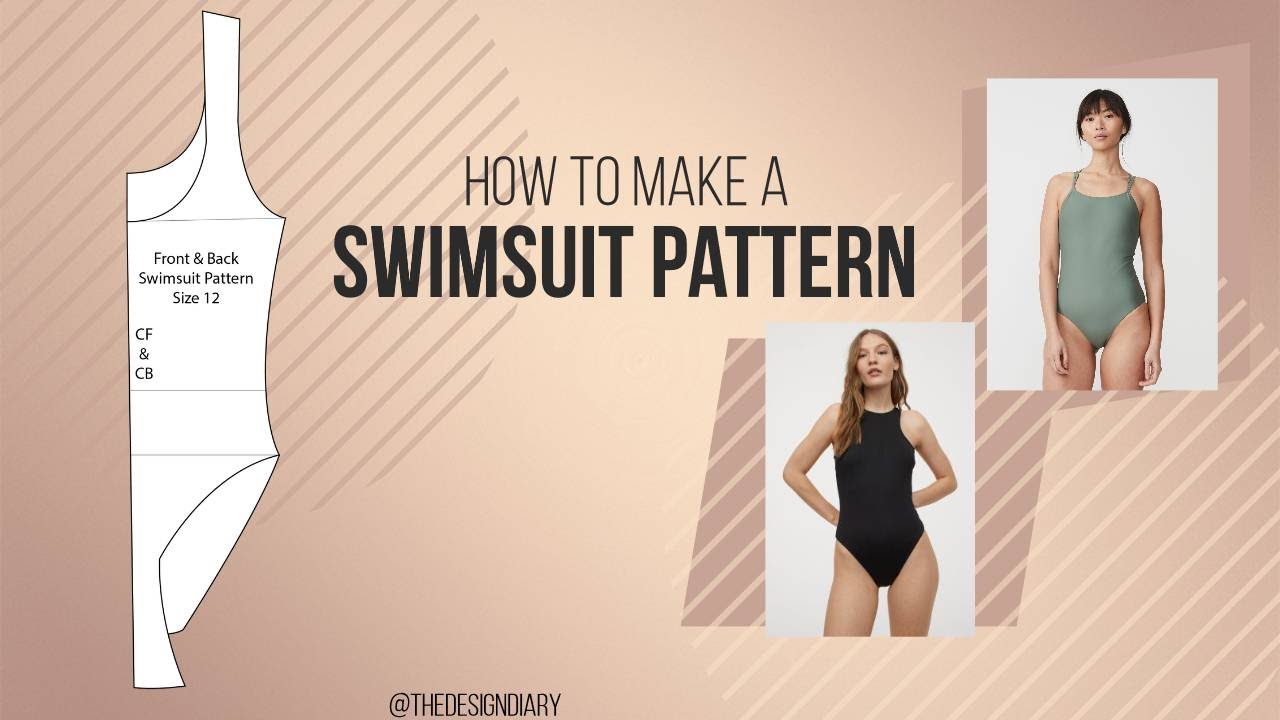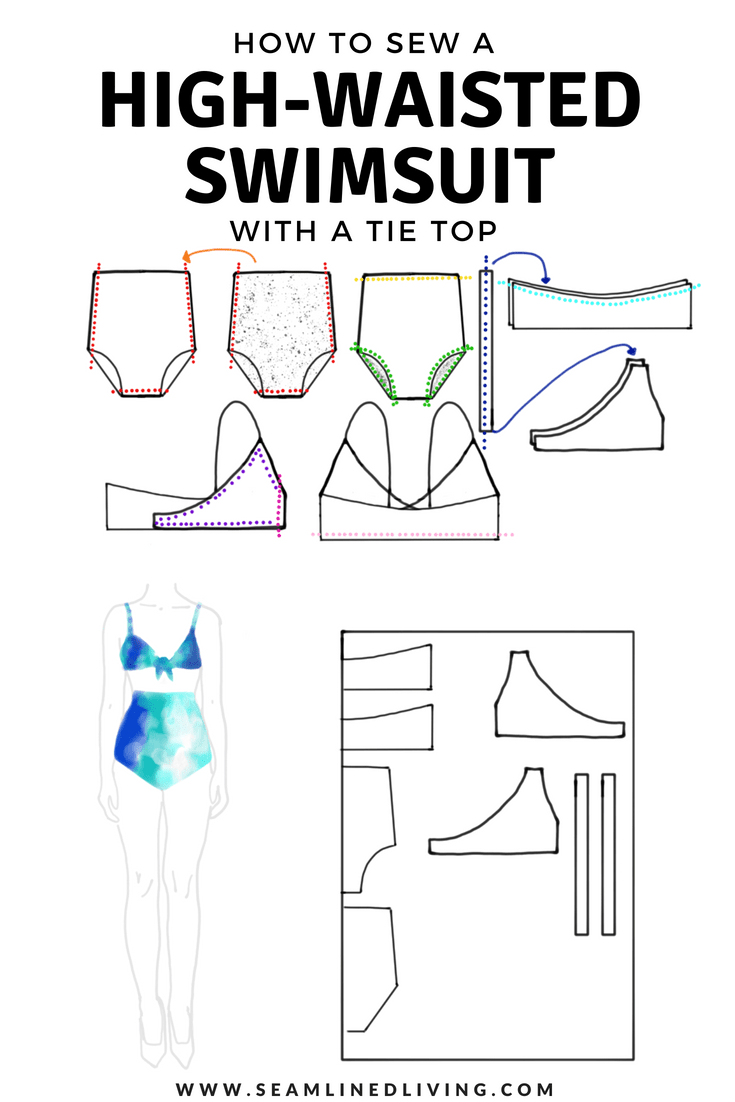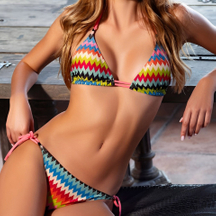Content Menu
● Introduction
● Understanding Swimwear Fabric
● Choosing the Right Materials
● Understanding Swimwear Pattern Basics
● Step-by-Step: How to Make Swimwear Pattern
>> Taking Accurate Measurements
>> Drafting Your Pattern by Hand
>> Digital Pattern Making
>> Copying an Existing Swimsuit
● Cutting and Preparing Your Fabric
● Sewing Techniques for Swimwear
● Tips for Perfect Fit and Finish
● Visual and Video Resources
● Frequently Asked Questions
● Conclusion
● Citations:
How to Make Swimwear Pattern: A Complete Guide for Beginners and Professionals
Creating a custom swimwear pattern is both an art and a science, blending creativity with technical precision. Whether you're a swimwear brand, a wholesaler, or an individual designer, understanding "how to make swimwear pattern" is essential for producing high-quality, well-fitted swimsuits. In this comprehensive guide, we'll walk you through every step of the process, from concept to cutting, and provide expert tips, visual resources, and answers to common questions.

Introduction
Swimwear design is a specialized field within fashion manufacturing, requiring knowledge of stretch fabrics, body contours, and functional construction. As a leading swimwear OEM factory in China, we know that mastering *how to make swimwear pattern* is key to delivering products that meet international standards and satisfy diverse customer needs[26][27].
Understanding Swimwear Fabric
Before diving into the pattern-making process, it's crucial to understand the types of fabrics used in swimwear. Swimwear typically requires materials that are stretchy, durable, and resistant to chlorine and saltwater. Common fabrics include:
- Spandex: Offers excellent stretch and recovery.
- Nylon: Lightweight and quick-drying.
- Polyester: Durable and resistant to fading.
When selecting fabric, look for a knit with at least 50% four-way stretch to ensure a comfortable fit.
Choosing the Right Materials
Fabric Selection
- Always use a *four-way stretch* fabric for swimwear, typically a blend of 80–90% nylon and 10–20% spandex or Lycra. This ensures comfort, durability, and resistance to chlorine and saltwater[1][3][13].
- Lining is essential for opacity and structure. Choose a lining with similar stretch properties as your main fabric[1][13].
Elastic and Notions
- Use swimwear-specific elastic (cotton or rubber) that withstands exposure to water, sun, and chemicals[13].
- Polyester or wooly nylon threads are recommended for strength and stretch[13].
Understanding Swimwear Pattern Basics
A swimwear pattern is a blueprint that determines the fit, style, and construction of a swimsuit. There are two main approaches:
- Hand-drafted patterns: Traditional, customizable, and easily adjustable for unique fits[9].
- Digital patterns: Created with CAD software for precision, repeatability, and quick modifications[4][9][14].
Both methods require an understanding of body measurements, negative ease (the fabric is smaller than the body for a snug fit), and seam allowances[11].

Step-by-Step: How to Make Swimwear Pattern
Taking Accurate Measurements
Accurate measurements are the foundation of a well-fitting swimsuit. Measure:
- Bust (fullest part)
- Waist (narrowest part)
- Hips (widest part)
- Torso length (shoulder to crotch)
- Leg and arm openings (if applicable)[3][6][11]
Always refer to the measurement chart of your chosen pattern or create your own for a custom fit[6].
Drafting Your Pattern by Hand
1. Sketch Your Design
- Visualize the style: one-piece, bikini, high-waisted, or cut-out.
- Consider design details: necklines, straps, cutouts, and panel seams[5][9].
2. Create the Pattern Blocks
- Start with a basic swimsuit block or use an existing swimsuit as a template[2][12].
- Trace the front and back pieces onto pattern paper, marking key points: neckline, armholes, crotch, and leg openings[1][5].
- Add seam allowances (typically 1 cm or 3/8 inch)[1][16].
3. Adjust for Fit
- Modify the pattern for style preferences and body measurements.
- Account for fabric stretch—reduce added length/width based on stretch percentage (e.g., add 0.7 cm instead of 1 cm if fabric stretches 30%)[12].
4. Mark Notches and Grainlines
- Indicate direction of greatest stretch (DOGS) on the pattern.
- Mark notches for aligning seams and elastic placement[13].
5. Cut Out the Pattern Pieces
- Use sharp scissors or a rotary cutter for precision[11].

Digital Pattern Making
- Use software like Adobe Illustrator or specialized CAD tools to draft and modify swimwear patterns[4][14].
- Digital patterns can be easily resized, duplicated, and shared with manufacturers[9][14].
- Export patterns as PDFs for home or factory use.
Copying an Existing Swimsuit
- Cut apart an old swimsuit along the seams.
- Fold each piece in half and trace onto pattern paper, adding seam allowances as needed[2][12].
- Adjust for elasticized edges by adding extra length where required[2].
Cutting and Preparing Your Fabric
- Cut fabric in a single layer with the printed side up for accurate pattern placement[11].
- Use pattern weights and a rotary cutter for slippery swim fabrics[11].
- Pay attention to grainline and stretch direction for optimal fit and comfort[13].
Sewing Techniques for Swimwear
- Use a serger/overlocker for strong, stretchy seams, or a zigzag/three-step zigzag stitch on a regular machine[1][13][11].
- Baste lining and outer fabric together before final assembly[1][13].
- Apply elastic using the sewn-and-turned method: attach elastic to the wrong side, overcast with a zigzag or serger, then turn and topstitch[13][16].
- Stretch elastic about 15% as you sew to prevent wavy edges[12][13].
Tips for Perfect Fit and Finish
- Make a test garment (toile) in swimwear fabric to check fit before final sewing[12].
- Adjust pattern as needed for bust, torso length, or leg openings[11][12].
- Use stretch needles and appropriate stitch length to avoid skipped stitches and birdsnesting[10][11].
- Finish edges with a serger or leave raw—swim fabric doesn't fray[11].
Visual and Video Resources
Video Tutorials
- [How to Make a Custom Swimsuit With MiSlope](https://www.youtube.com/watch?v=abqO6k5suss) – Step-by-step digital drafting and measurement input[6].
- [Sew A Bikini With Me! (Triangle bikini top and high leg bottom)](https://www.youtube.com/watch?v=wzLMf0-NjoA) – Cutting, sewing, and elastic application[7].
- [Everything you need to know about sewing your own swimsuit](https://www.youtube.com/watch?v=aBCe7ySnraQ) – Fabric selection, lining, and construction techniques[8].
- [Swimsuit Pattern Tutorial: How to Draft a Swimsuit](https://www.youtube.com/watch?v=mCXzd3y4604) – Drafting and sewing bikini bottoms, including reversible options[16].
- [DIY Stella Triangle Bikini Top Pattern Sew-along Tutorial](https://www.youtube.com/watch?v=BwLUwolsMPM) – Complete sewing process for a bikini top[17].
Frequently Asked Questions
1. What fabric is best for making swimwear patterns?
Use a four-way stretch fabric, typically 80–90% nylon and 10–20% spandex or Lycra, with a similar-stretch lining for structure and opacity[1][3][13].
2. How do I ensure my swimwear pattern fits well?
Take accurate body measurements, consider negative ease, and always make a test garment in swimwear fabric before final assembly[11][12].
3. Can I make a swimwear pattern from an existing swimsuit?
Yes. Carefully cut apart the old swimsuit, trace the pieces onto pattern paper, add seam allowances, and adjust for elasticized edges[2][12].
4. What sewing machine settings should I use for swimwear?
Use a zigzag, three-step zigzag, or lightning bolt stitch for stretch. A serger is ideal but not required. Test stitches on scraps to ensure durability and stretch[1][11][13].
5. How do I apply elastic to swimwear edges?
Attach elastic to the wrong side of the fabric using a zigzag or serger, then turn and topstitch. Stretch the elastic about 15% as you sew for a smooth finish[12][13][16].
6. Is it better to use hand-drafted or digital patterns?
Both methods are effective. Hand-drafted patterns are customizable and traditional, while digital patterns offer precision, easy modifications, and fast sharing[4][9][14].
Conclusion
Making swimwear patterns is a fulfilling process that allows for creativity and customization. By following these steps, you can create unique and stylish swimwear that fits perfectly. Remember to practice and experiment with different styles and techniques to enhance your skills.

Citations:
[1] https://papertheorypatterns.com/pages/sewing-swimsuits
[2] https://sarkirsten.com/blog/2019/6/19/how-to-make-a-sewing-pattern-from-your-favorite-rtw-swimsuit
[3] https://spandexpalace.com/blogs/everything-to-know-about-spandex-fabric/how-to-create-your-own-swimwear-with-spandex-fabric
[4] https://augustsociety.com/blogs/blog/swimwear-design
[5] https://www.muellerundsohn.com/en/allgemein/swimwear-pattern/
[6] https://www.youtube.com/watch?v=abqO6k5suss
[7] https://www.youtube.com/watch?v=wzLMf0-NjoA
[8] https://www.youtube.com/watch?v=aBCe7ySnraQ
[9] https://brydenapparel.com/your-complete-guide-to-swimwear-manufacturing/
[10] https://www.reddit.com/r/sewhelp/comments/jiknb1/consistently_having_problems_sewing_swimwear/
[11] https://helensclosetpatterns.com/blogs/helens-closet/top-10-tips-for-sewing-swimwear
[12] https://www.thesewingretreat.co.uk/post/learn-how-to-pattern-cut-and-sew-your-own-swimwear
[13] https://www.seamwork.com/sewing-tutorials/swimwear-basics
[14] https://patternlab.london/home/project/how-to-create-a-bikini-swimwear-pattern-in-adobe-illustrator/
[15] https://www.youtube.com/watch?v=R9UuGqGWpuM
[16] https://www.youtube.com/watch?v=mCXzd3y4604
[17] https://www.youtube.com/watch?v=BwLUwolsMPM
[18] https://www.reddit.com/r/sewing/comments/1baj14j/does_anyone_have_any_tips_for_one_making_a/
[19] https://www.pinterest.com/ideas/swimwear-pattern/956297821593/
[20] https://bikinidesignclub.com
[21] https://www.pinterest.com/pin/568649890457020416/
[22] https://www.patternsforpirates.com/swim-basics/
[23] https://swimwearbali.com/10-common-questions-about-swimwear-manufacturing
[24] https://swimstyle.com.au/pages/faqs
[25] https://www.reddit.com/r/sewing/comments/btbh6n/dos_and_donts_of_making_swim_suits/
[26] work.fashion_manufacturing
[27] work.fashion_design





































